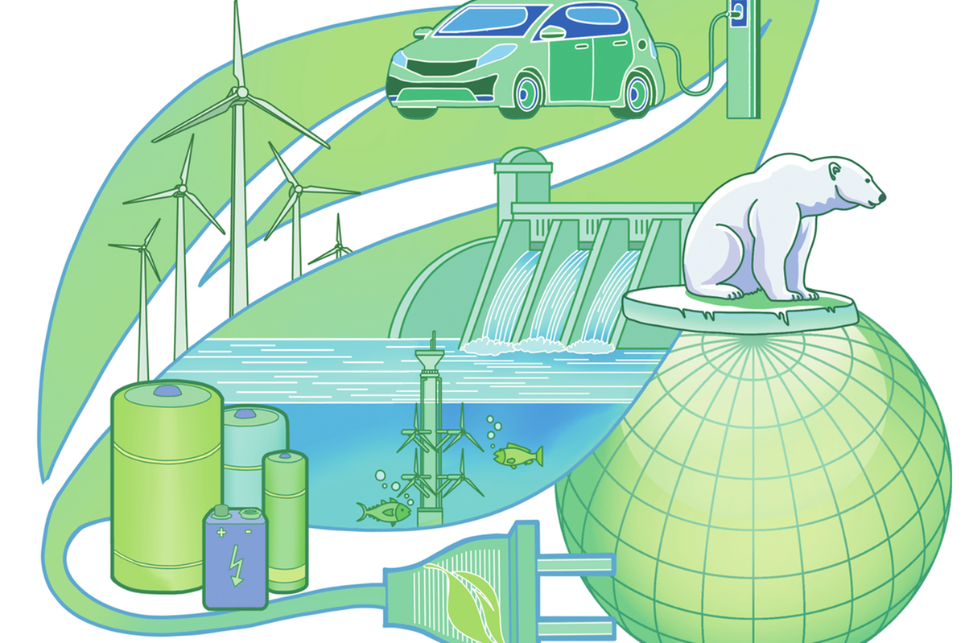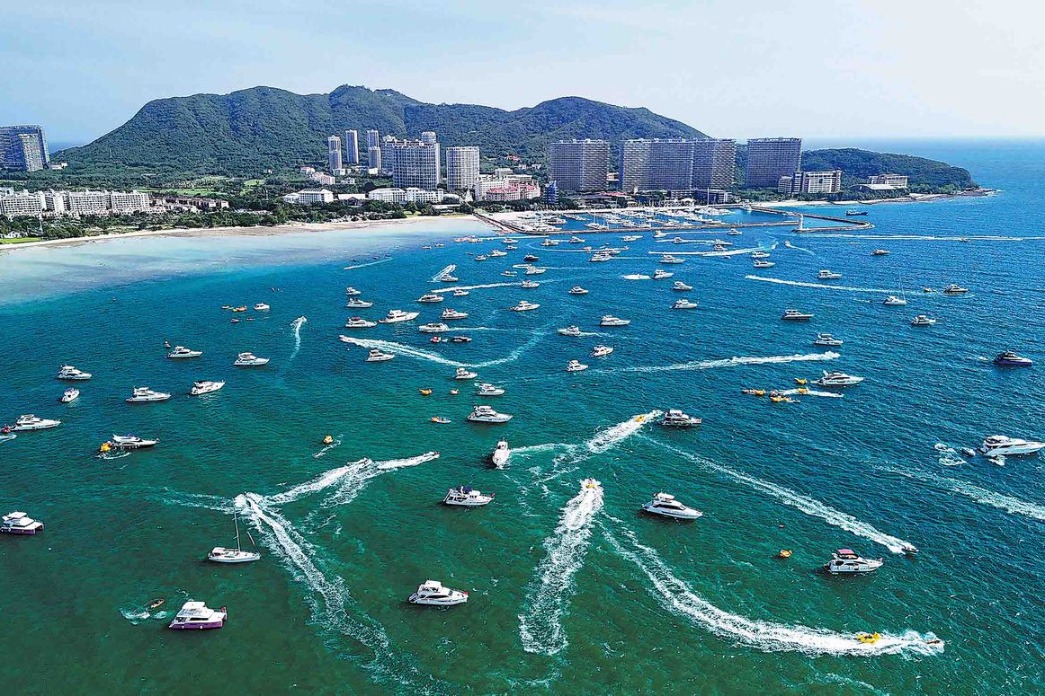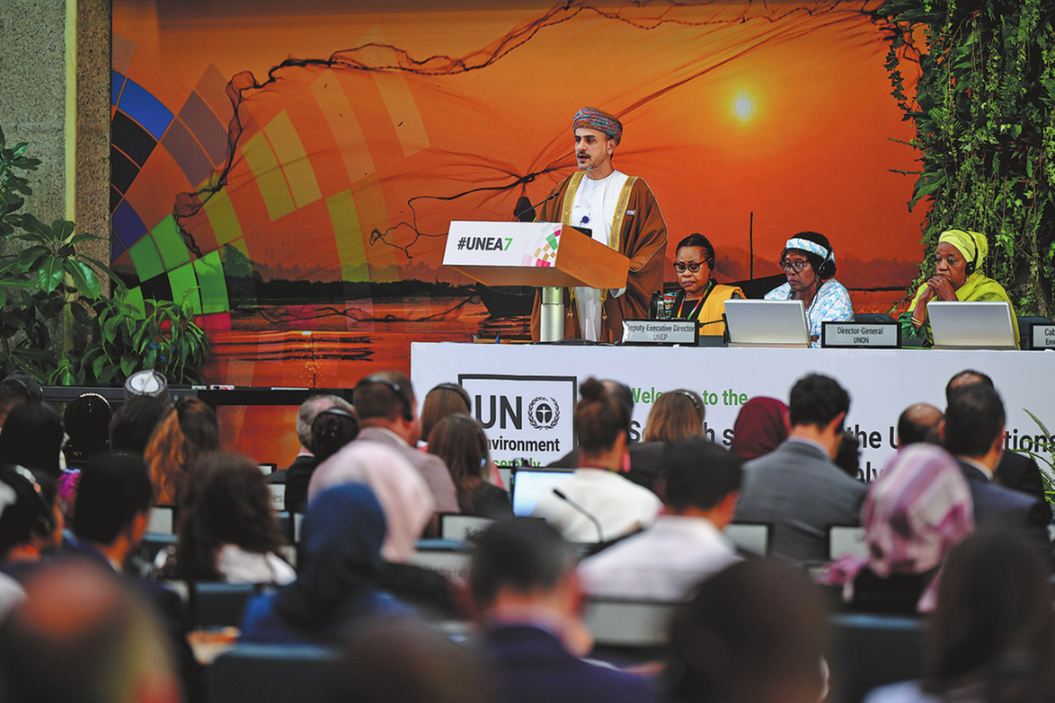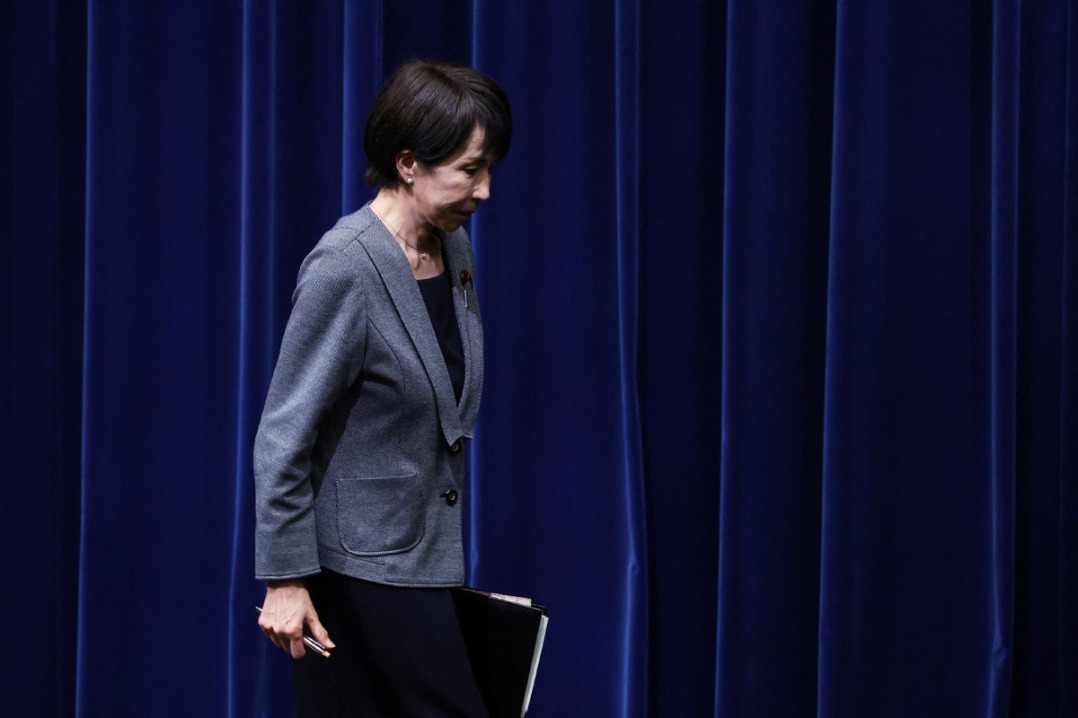Partners joining hands in biodiversity protection


China and ASEAN are promoting regional collaboration to build the resilience of nature
The 43rd ASEAN Summit is being held in Jakarta, Indonesia, from Sept 5 to 7, focusing on "strengthening ASEAN's resilience in facing the challenges". Considering the Association of Southeast Asian Nations' trade advantages in natural resource-dependent commodities and its vision of sustainable development, this resilience reflects ASEAN's balancing act between nature conservation and economic and social development.
The ASEAN region, one of the world's most biodiversity-rich areas, has several of the fastest-growing economies in the world. ASEAN is expected to become the world's fourth-largest economy by 2030, while more than 660 million people currently depend on the region's rich natural resources for their livelihoods and well-being. Promoting biodiversity cooperation will not only contribute to the improvement of environmental quality and conservation of regional ecosystems, but will also help build the region into a model for the world.
In the first year of entering the Kunming-Montreal Global Biodiversity Framework era, the implementation of the 23 targets, which include protecting at least 30 percent of the world's land and oceans and increasing the funds for developing countries' biodiversity conservation efforts, will be an important task for the parties in the run-up to the 16th meeting of the Conference of the Parties to the Convention on Biological Diversity (COP16) in 2024. Parties, including the ASEAN members, are required to submit updated National Biodiversity Strategies and Action Plans (NBSAPs) prior to the COP16. Based on this, ASEAN convened the world's first regional NBSAP meeting in mid-August in Manila, the Philippines. Countries set out their respective and regional ambitions, laying the groundwork for advancing the international biodiversity process.
ASEAN has been promoting biodiversity cooperation among its member countries, with innovative initiatives, joint actions, coordination mechanisms, etc. ASEAN initiated the ASEAN Heritage Parks Programme, established the ASEAN Centre for Biodiversity, and launched the ASEAN Green Initiative. The ASEAN members have developed road maps for action and are guided by the ASEAN Comprehensive Recovery Framework to ensure that the region's rich biodiversity resources are sustainably managed. ASEAN is mainly composed of developing countries, and in addition to the very prominent contradiction between overall development and conservation, it is also facing several problems in terms of effective implementation, considering conservation financial support and technical capacity, which need to be urgently resolved.
Facing biodiversity conservation challenges, ASEAN's international cooperation provides resources and capacity support for actions. For example, in 2017, ASEAN launched the Biodiversity Conservation and Management of Protected Areas in ASEAN project in cooperation with the European Union, which aims to strengthen biodiversity conservation and effective management of protected areas in ASEAN. ASEAN's natural resources are predominantly export-oriented, with exports such as food, timber, fisheries, minerals and processed products accounting for 20.6 percent of its total exports in 2021, and thus its regional conservation actions require extensive collaboration from other countries.
As ASEAN's largest trade partner and a good neighbor, China has always been committed to ecological protection cooperation with ASEAN. In 2010, China compiled the China Biodiversity Conservation Strategy and Action Plan (2011-30), elevating biodiversity conservation to the level of a national strategy. And in 2021, it issued the Guidelines for Green Development of Outbound Investment Cooperation, which promotes the compliance of Chinese enterprises with the global environmental conventions, and dovetails with the Belt and Road Green Investment Principles, providing guidance to help China-ASEAN green development.
The China-ASEAN Environmental Cooperation Center, established in 2011, is a body dedicated to formulating cooperation strategies. In the newly released Framework for the ASEAN-China Environmental Cooperation Strategy and Action Plan (2021-25), the two sides have clearly stated that they will focus on biodiversity conservation and ecosystem management. In addition, the two sides have promoted environmental policy dialogue through the ASEAN-China Environmental Cooperation Forum, promoted the ASEAN-China Partnership for Eco-Friendly Urban Development and the building of ASEAN-China Environmental Information Sharing Platform and carried out a number of capacity building and related cooperation initiatives in the areas of climate change and biodiversity conservation. At the same time, border regions such as Guangxi Zhuang autonomous region and Yunnan province have actively played the role of bridgeheads connecting with neighboring ASEAN members by providing biodiversity and development-related projects, such as the Core Environment Program and Biodiversity Conservation Corridors Initiative in the Greater Mekong Subregion, for neighboring ASEAN members.
While ASEAN members have made positive progress in biodiversity conservation, there is an urgent need to strengthen innovative financing mechanisms and mainstream them into overall development planning in the context of the implementation of the Global Biodiversity Framework Targets for the new decade. Innovative financing mechanisms such as blended finance have already been piloted in the region and are ready to be scaled up. In addition, ASEAN should further deepen regional cooperation on cross-border biodiversity conservation and fully mobilize resources to build a resilient ASEAN community in harmony with nature.
Xu Jiayi is the program director at the Greenovation Hub. Yang Haitao is a program officer at the Greenovation Hub.
The authors contributed this article to China Watch, a think tank powered by China Daily.
The views do not necessarily reflect those of China Daily.

































